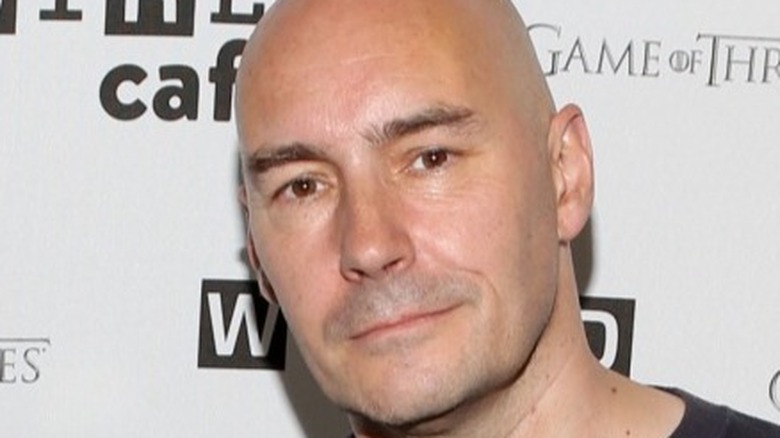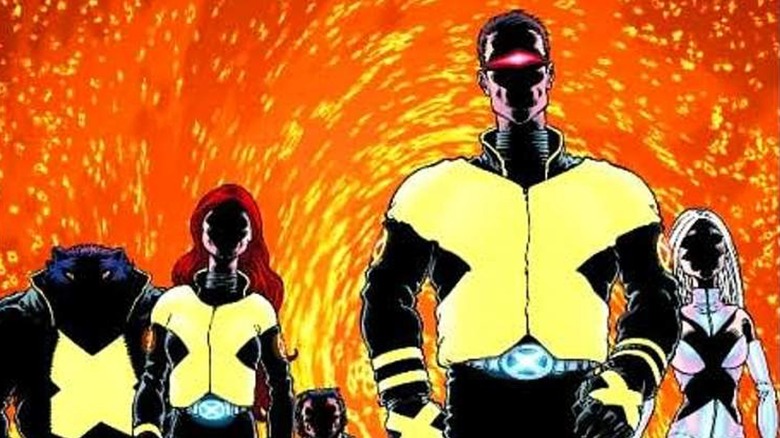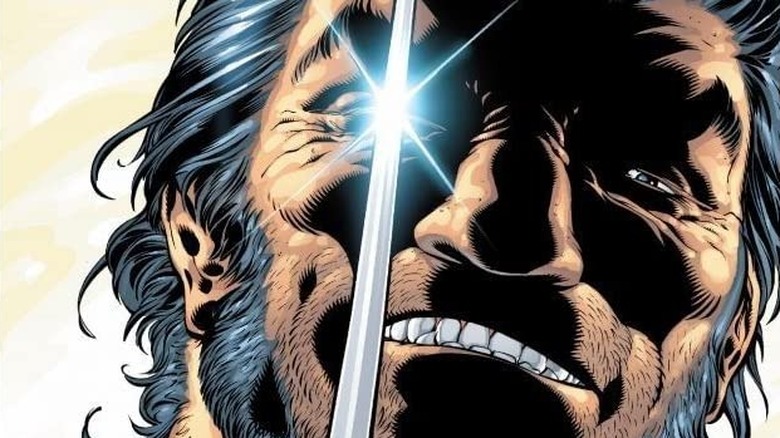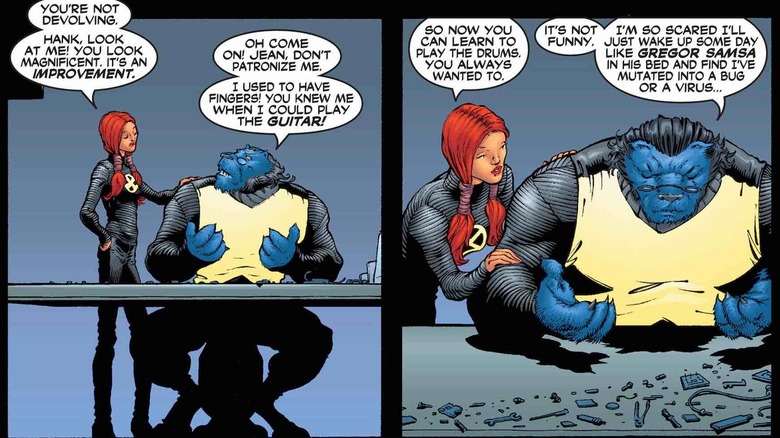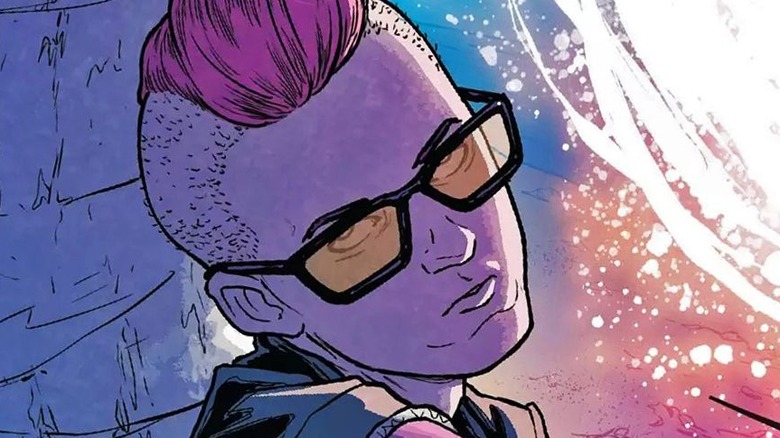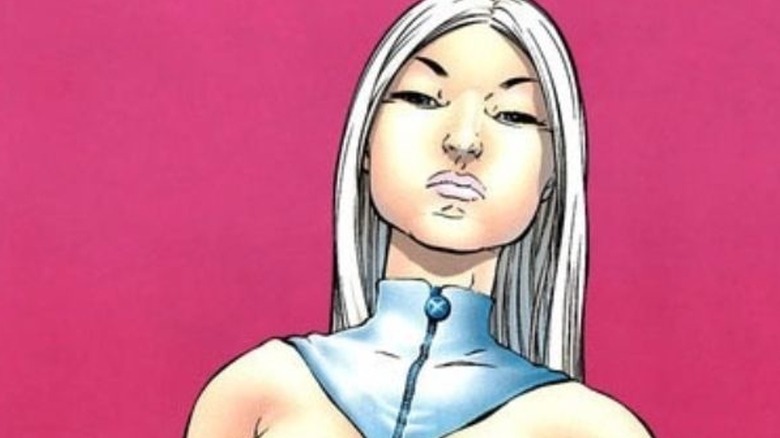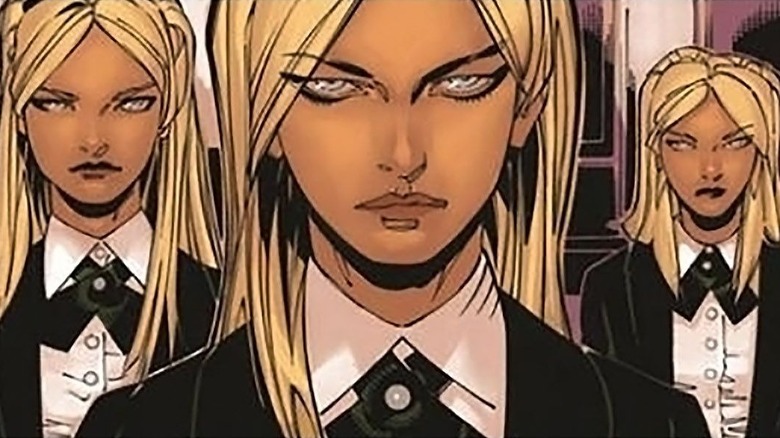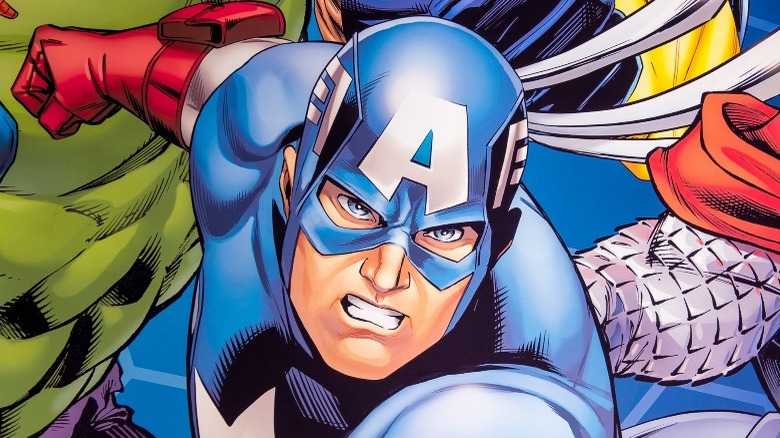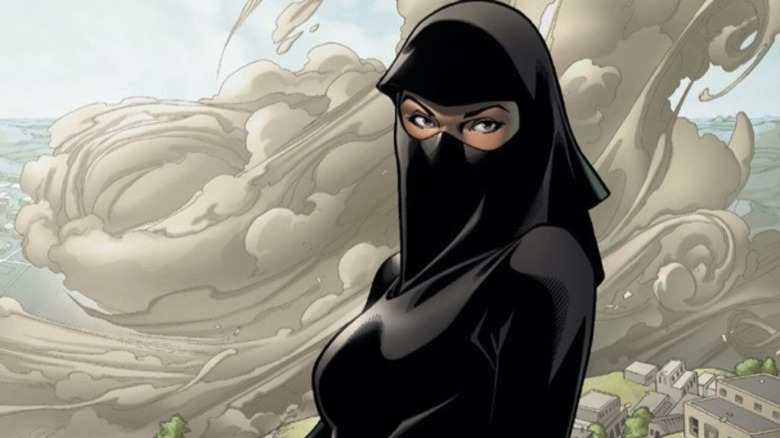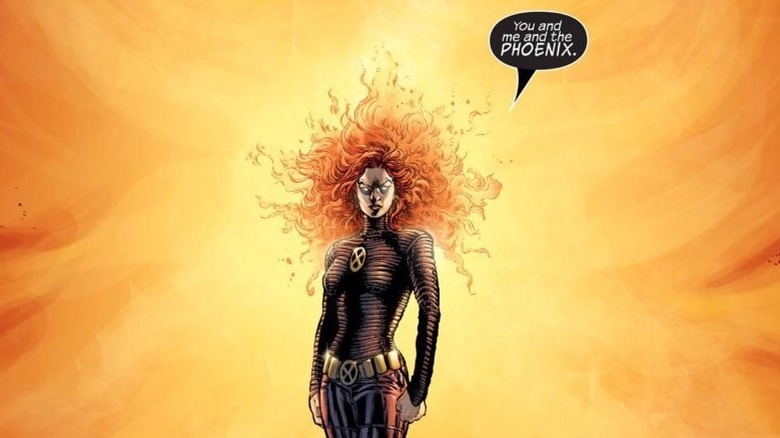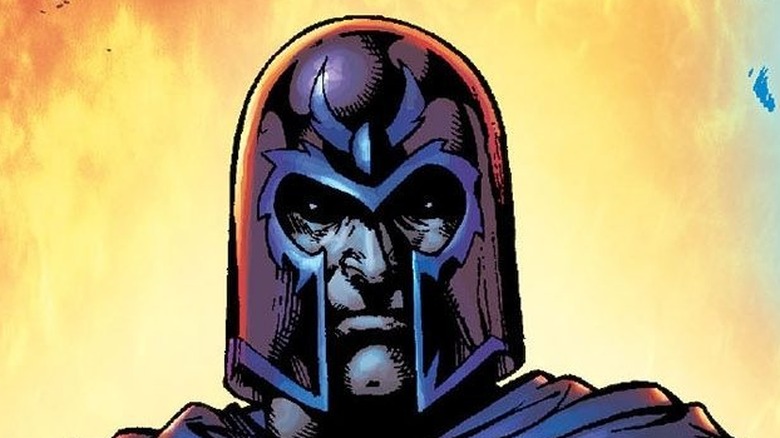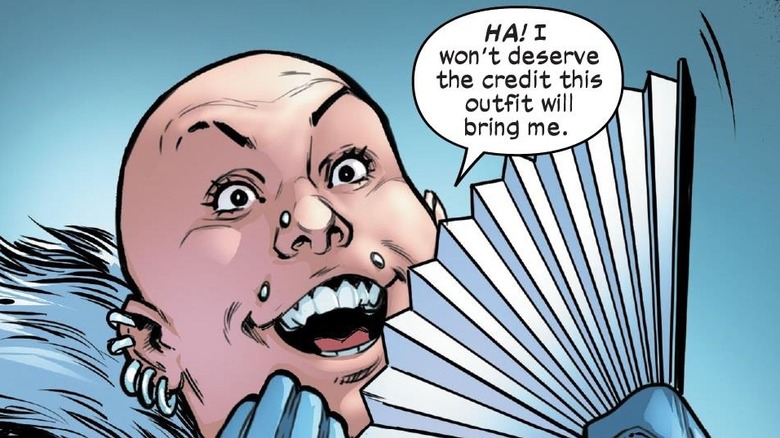Grant Morrison Revolutionized The X-Men. This Is How They Did It
Starting with July 2001's "New X-Men" #114, "E is for Extinction: Part One," and ending with May 2004's #154, "Here Comes Tomorrow: Part Four," Grant Morrison's 41 "X-Men" issues came at a moment in which the franchise needed a new direction — and they brilliantly delivered.
When discussing the X-Men comics, it's important to acknowledge Chris Claremont's hugely successful run writing the series from 1974 to 1991. After over a decade and a half of Claremont guiding "Uncanny X-Men," Marvel felt the franchise needed some new blood; while Claremont co-wrote 1991's "X-Men" #1, which set a world record with 8.1 million copies sold, he departed the franchise later that year.
Stepping into Claremont's shoes would be writers such as Joe Kelly, Fabian Nicieza, and Scott Lobdell. While they were excellent writers, the X-Men titles seemed to be propelled by various events and crossovers instead of the long-term character development Claremont's stories were known for. And with 2000 signaling the start of a new millennium and audiences wanting something new, Marvel recruited Morrison to evolve the X-Men for the 21st century. By reflecting on Morrison's stylistic choices, stories, and new characters, we can see how they revolutionized the franchise.
No ordinary superheroes
One of the first things Morrison established was that the X-Men were no longer wearing brightly colored spandex. Stylized combat uniforms more in line with what the characters wore in the 2000 "X-Men" film, the new outfits set a tone for how team leader Charles "Professor X" Xavier viewed his teams in the context of helping mutants.
In "New X-Men" #114, "E is for Extinction: Part One," Xavier asks his team what they think of the new uniforms. Wolverine approves, saying "Suddenly I don't have to look like an idiot in broad daylight." Beast follows this up by adding, "I was never sure why you had us dress up like superheroes anyway, Professor." Cyclops answers, "The Professor thought people would trust the X-Men if we looked like something they understood."
Months before 9/11 transformed the world and how people viewed good vs. evil and heroism, Morrison recognized that depicting the X-Men as generic superheroes no longer worked. In an interview with Newsarama, Morrison touched upon this change. "I feel that I was right in positioning the X-Men as a rescue and emergency organization," they recalled. "Something I'd planned even before the events on 9/11. I've always seen X-Men as a science fiction soap opera and the book has some of the best characters in comics. They work well as an emergency relief service with adventures on the grandest scale."
New types of artists for the X-Men
Chris Claremont's shadow loomed over the X-Men after he left, but he wasn't the only creator to have this impact. For years Jim Lee, Rob Liefeld, Whilce Portacio, and Marc Silvestri were the main X-Men artists. Lee was of particular value since he designed the look of the characters for "X-Men: The Animated Series." Those artists were so popular, in fact, that they left Marvel to form Image Comics.
Knowing how popular Lee, Liefeld, Portacio and Silverstri were, Marvel continued to hire artists who evoked the styles of those four. While Morrison did work with Silverstri on the last "New X-Men" arc, they also worked with artists who were either on the upswing of their career or had styles antithetical to Lee's and other Image founders'.
As academic Neil Shyminskey of Cambrian College wrote in the article "Mutant readers, reading mutants: Appropriation, assimilation, and the X-Men," published in the International Journal of Comic Art, "The artists hired to work with Morrison — especially Frank Quitely and Igor Kordey — are reputed for drawing 'ugly characters'." This is important, Shyminskey argued, because it helps "purposely resist identification from those readers who are used to appropriating a romanticized mutanity through the beautiful characters drawn previously by 'pin-up' artists like Jim Lee or Marc Silvestri."
In short, Morrison's use of artists not typically associated with superhero comics visually communicated just how different their X-Men would be.
The simple brilliance of secondary mutations
Though hinted at in "New X-Men" #114, the term "secondary mutations" is explicitly brought up in #116. For years writers have struggled with ways to expand a character's power set. Normally, this was done through a character learning a new way to apply their power or something externally happening to them. An example of the former would be Sunspot (Roberto Da Costa) learning to fly by realizing he could project his solar-powered energy blasts to propel him in 1993's "X-Force" #28. An example of the latter would be hosts for the nigh-invulnerable entity known as the Phoenix Force. Most of these hosts are powerful to begin with, but becoming connected to the Phoenix Force grants them new abilities they didn't previously have.
Making secondary mutations an explicit part of mutant biology in the Marvel Universe created an opening for future writers to develop characters in new ways. For example, secondary mutations allowed Emma Frost's cold and elitist mindset to become embodied when she gained the ability to turn into organic diamond, and allowed Angel to further live up to his name by developing a healing factor that could be shared with others.
Quentin Quire, annoying but lovable rebel
As part of Grant Morrison's mission to make Xavier's school more like a traditional school, dozens of student characters were introduced — including Quentin Quire, who first appeared in "New X-Men" #134 as one of the school's new students.
In an Newsarama interview, Morrison noted, "It's easy goosing up Superman or the X-Men to make them appear a little more in step with the times, but the truth is that new times need new characters." Few new characters embodied the early 2000s better than Quire. Like many young adults at the turn of the century, Quire was in a position of power but had no real outlet. A natural contrarian, he began to antagonize the X-Men by claiming that "Magneto Was Right" and even started riots at the Xavier Institute. Morrison eventually killed off Quire, but the final arc of their run, "Here Comes Tomorrow," showed a future version of the character connected to the Phoenix, leaving an opening for him to be easily brought back.
It was an opportunity other writers took advantage of. At this point, Quire has been around for years and remains a fan favorite. He perfectly mirrors the frustration of people with talent and privilege who want to help, only to allow their arrogance and immaturity to get in their way.
Incorporating Emma Frost
Reflecting on their first year writing "New X-Men," Morrison expressed how pleased they were that they had "rehabilitated Emma Frost," saying writing for the character had been a high point.
"I'd originally intended to use Colossus in her place but he died shortly afterwards and became tragically unavailable," Morrison said. "A reader, (Kneisel, they call him, Ken Kneisel...) made a wild suggestion that I bring in Emma as a team member and the idea fascinated me to the point of making it real. The whole thing fell into place and there she was, as large as life, being rude to everyone."
Frost first appeared in 1980's "Uncanny X-Men" #129, presented as a femme fatale and antagonist of the X-Men. Frost's character evolved over time, and by 1994, she'd begun to work with the X-Men to train the next generation of mutants in the series "Generation X." Under Morrison's stewardship, Frost was more than simply a reformed villain — she was a mentor who prided herself on her empathy while still possessing an elitist world view. It was a bold and successful take on the character that few writers have managed to equal.
Stepford Cuckoos
It's impossible to talk about Grant Morrison's take on Emma Frost without bringing up the Stepford Cuckoos. First appearing in "New X-Men" #118, the characters are quintuplet sisters with various psychic powers — Sophie, Phoebe, Irma, Celeste, and Esme Cuckoo. (Morrison named them this way so their initials spelled "spice.")
The origins of the Stepford Cuckoos wouldn't be explored until long after Morrison left, but the sisters immediately provided a unique mirror for Frost. In addition to looking similar to and having similar powers to Frost, the sisters have similar personalities. To Frost, they represent a form of redemption if she can guide them toward heroism. The sisters also embody the unique tension of wanting to be an individual while trying to remain loyal to a tight community.
The Cuckoos also celebrate Morrison's love of classic science fiction — their names are homages to "The Midwich Cuckoos" and "The Stepford Wives." "The Stepford Wives" is about a community where husbands have replaced their wives with submissive robot lookalikes; in "The Midwich Cuckoos," an alien presence impregnates women in a small town with human-looking children who have psychic powers.
The ultimate tribute to Morrison's success with these characters is that within a few years, the Stepford Cuckoos began appearing outside comic books — first in the 2004 video game "X-Men Legends II: Rise of Apocalypse," followed by 2006's "X-Men: The Last Stand," 2009's "Wolverine and the X-Men," and the live-action show "The Gifted," which ran from 2017-2019.
In "New X-Men" #154, Morrison's final issue, it's revealed that the sisters are actually Weapon XIV. Which brings us to the next point.
Connecting Captain America to Wolverine's Weapon X
Retcons are a pillar of modern superheroes. Anything that happens in one issue can be undone or radically recontextualized later on. Grant Morrison proved this when they changed the X in Weapon X from a letter to the Roman numeral for 10: Suddenly, Wolverine wasn't just the product of a government project to turn mutants into weapons. He was now part of the tenth iteration within Weapon Plus — a series of government projects focused on creating weapons to destroy mutants.
This retcon extends the history of Weapon Plus to include Captain America and the program that created him. In a "New X-Men" #145 panel featuring Steve Rogers as Captain America, a computer displays the following: "...Weapon I trials still remain the most successful application of the technology to date, but the quest for the perfect soldier, equipped to win the evolutionary war, goes on..."
Given that Wolverine and Steve Rogers have worked together multiple times in the comics, with their first team-up retold in "Uncanny X-Men" #268, placing the two characters in the same legacy of human experimentation gives them further texture — and does the same for other characters who were transformed into weapons.
Creating Sooraya Qadir aka Dust
Over 20 years later, it's difficult to explain what life was like after 9/11. Islamophobia and anti-Middle Eastern rhetoric was rampant, making it a fraught yet crucial moment for Grant Morrison to introduce Sooraya Qadir, the character also known as Dust. First appearing in "New X-Men" #133, Qadir is a Sunni Muslim in Afghanistan who is initially rescued by Wolverine.
While introducing a Muslim character was a bold choice in 2002, Qadir's initial appearances haven't aged well, as Safiyya Hosein, Ph.D. writes in an academic article titled "Veiling the Superhero: A Comparative Analysis of Dust and Qahera."
Following Qadir's rescue, the X-Men can't find her but notice dust around Wolverine. Jean Grey, realizing that Qadir is in non-human form, "begins to talk to Sooraya, coaxing her into showing herself by reminding her that they were the ones who rescued her," according to Hosein.
"Earlier on Dust was powerful enough to flay 13 Taliban members alive in her superpower form. The idea of a mutant that powerful being scared to appear in front of the others is a puzzling disempowerment," Hosein continued. "The scene also juxtaposes Dust with another female character — the brave, jeans-clad white American woman, Jean Grey, who is also positioned as a 'saviour' who seemingly conjures her up, thus reinforcing Spivak's observations of the domesticated Other."
While it wasn't a perfect introduction, Morrison contributed a Muslim character with a unique power set who has continued to evolve.
The Grey-Phoenix connection
The "X-Men" storyline known as "The Dark Phoenix Saga" was initially about Jean Grey gaining cosmic-level powers that threatened to consume her until she allowed herself to die. Years later, a retcon revealed that the Phoenix Force placed the real Jean in a cocoon left under the waters of Jamaica Bay while it created a duplicate Jean body and pretended to be her.
Morrison merged the two versions. As Thomas Bacon wrote, "The relationship between Jean Grey and the Phoenix Force was finally explained during the Grant Morrison era. He adapted the theological idea of 'apotheosis,' of a human transcending their humanity and uniting with a pre-existent Divine being. The teaching was incorporated into the so-called 'New Age' movement in the 1960s, the kind of mysticism Grant Morrison has always been fascinated by. He allowed it to inform his 'New X-Men' run, and it was a perfect thematic fit for Jean's arc."
In Morrison's vision, Grey was no longer a human the Phoenix discarded and copied. Instead, she was a mutant so powerful she was connected to a universal force that embodied life and death. Morrison's decision to kill Grey at the end of their run worked so well that this time, she stayed dead for over decade.
Made fans uncomfortable with Magneto
Magneto's long-term function in the X-Men franchise has been to do something, get stopped, and then come back. Given that he's a survivor of the Holocaust, it's often easy to empathize with Magneto's worldview, but Grant Morrison decided to shake this up by highlighting his support of non-mutant genocide.
Discussing the decision to present Magneto this way in an interview with PopImage, Morrison described the character as "a mad old terrorist" and added, "No matter how he justifies his stupid, brutal behavior, or how anyone else tries to justify it, in the end he's just an old bastard with daft, old ideas based on violence and coercion. I really wanted to make that clear at this time."
While Marvel would backpedal Morrison's depiction of Magneto almost immediately after they stopped writing the series, it served as a reminder that while Magneto would be a charismatic leader if he existed in the real world, he'd also support the extinction of an entire race.
Made the X-Men strange again
The cover of 1963's "X-Men" #1 sports a headline describing the X-Men as "The Strangest Super-Heroes of All!" While these characters were originally depicted as unusual, the series soon evolved to present them as generic costumed vigilantes. Conceptually, the X-Men franchise may use metaphors to evoke the oppression of minorities, but for years, it rarely depicted mutants as a culture. Grant Morrison broke away from this tradition.
As Oliver Sava wrote for Polygon, "For decades, X-Men comics have rehashed the same ideological conflicts with slight variations. Grant Morrison's run in the early '00s was revolutionary in how it explored the ways mutant culture diverged from humans." In addition to introducing characters such as the fashion guru Jumbo Carnation, Morrison's "New X-Men" showed mutant art and music, laying a foundation that future writers would build on and further explore.
